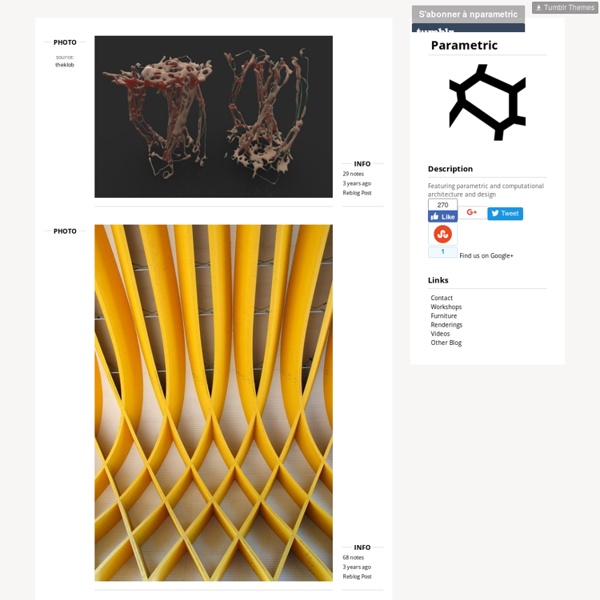



Business Cards – PROJECTiONE Before our trip to New York we decided to make business cards that would both represent what PROJECTiONE is about and stand out as something different among a wallet of others. We recognize that many of our projects find meaning within their design/fabrication processes as much as in their final state; we intended to take on these cards as a project with a similar mindset. The cards uniquely combine a very precise digital process with a learned analog system [vacuum forming] producing highly individualized outcomes. We bought-out our local hobby shop to test [destroy] sheet after sheet of polystyrene in order to develop the right process for this specific instance.
Structural Tessellations and Morphologies | 74 FOOTWEAR DESIGN CONSULTING The honeycomb is probably the epitome of structural efficiency. Bees have been creating hexagonal comb structures for millenia and humans inspired by the incredible structural strength to weight ratio of their combs have joined them. It is said that the first man-made honeycomb was made by Daedalus using gold by lost wax casting more than 3000 years ago. In 1859 Charles Darwin said that “the comb of the hive-bee, as far as we can see, is absolutely perfect in economizing labour and wax”. Little noticed is that even the the closed ends of the honeycomb cells are also an example of geometric efficiency as their trihedral shape allows two opposing honeycomb layers to nest into each other, with each facet of the closed ends being shared by opposing cells. 50 years later D’Arcy Wentworth Thompson discovered that bees build their honeycombs first as cylinders and as they push more wax onto the inside surface they also push the soft sides out and up against the neighboring cylinders.
March 2012 Dec07// Master degree at Politecnico di Torino with a computational design thesis TMD_tsunami memorial design competition, network as design tool::: prof.Roberto Apostolo, prof.Mario Grosso, Arch.Andrea GrazianoJan08// Join at studioGriffa, Turin as project architectFeb08// at DRL TEN exhibition, Architectural Association, London with K_pavilion project ::: visiting Zaha Hadid Architects London, attends co|de lecture: Shajay Booshan, Danilo Arsic Feb08// K_pavilion publicated at DRL TEN book.Mar08// UIA infopoint competition.May08// MCA, Mario Cucinella architects "Una stanza di luce" workshop at Cavallerizza Chiablese, TurinJun08// Workshop “Parametric Architecture” tutors Ludovica Tramontin Asp(e)x and Erich Schoenenberger(Su11 architecture+design, Pratt Insitute, NY, USA)Jul08/// Torino World Design Summer School “Prototyping the city” assistant tutor of EcologicStudio-Architectural Association, NSU-GSAPP-Columbia University and Politecnico di Torino+ Configuration 0 project.
Inside Smartgeometry Inside Smartgeometry: Expanding the Architectural Possibilities of Computational Design Edited by Brady Peters and Terri Peters On behalf of the Smartgeometry group, we would like to invite you to the launch of "Inside Smartgeometry: Expanding the Architectural Possibilities of Computational Design" edited by Brady and Terri Peters and published by John Wiley & Sons. The richly illustrated, hard cover book features 24 original texts from members of the SG community. It provides both a history of the past ten years of SG, and offers ideas for the future of computational design in architecture. To celebrate the book´s release, join us for drinks and a few words by the Smartgeometry Directors. 21 March 2013 6.30 pm The Bartlett School of Architecture UCL, Royal Ear Hospital Ground Floor, Capper Street (corner of Huntley Street) London, WC1E 6AP Smartgeometry (SG) is a key influence on the architectural community who explore creative computational methods for the design of buildings. Robert Aish
CirclePack and circle packing General Comments: My primary research interests revolve around circle packing: connections to analytic function theory, Riemann surfaces, computational conformal structures, and applications. (see my curriculum vita.) A circle packing is a configuration of circles with a specified pattern of tangencies. Circle packings were introduced by William Thurston in his Notes. Conformal welding by my former student G. The Zoo: Here is a small menagerie of circle packings in the plane, the hyperbolic plane, and the sphere. Research Papers: Recent papers for downloading: Circle Packing Software: The Java Version 1.0 of CirclePack is now available and should run on any platform with Java 1.6++. Circle Packing Bibliography: I try to maintain a bibliography of papers on circle packing. Ways to contact me: Kenneth Stephenson, (kens "at" math.utk.edu) Department of Mathematics, Univ. of Tenn., Knoxville, TN 37996-1300 Phone: (865) 974-4330 Fax: (865) 974 6576 Last Modified: May 2007.
Artists | codedchromics I hadn’t heard about this before but fist (whoops, mean first) saw this earlier this month mentioned on Syuzi Pakhchyan’s blog Wearable Technology (always an inspiration!) Sophie de Oliveira Barata offers a ‘real’ option ‘surreal’ option and an ‘unreal’ option – you’ve just got to love that! Here are some of the incredible decorated and unusual prosthetics from The Alternative Limb Project - “The Alternative Limb Project offers a personal and friendly bespoke service, which provides unique prosthetics to blend in with the body or stand out as a unique piece of art, reflecting the wearer’s imagination, personality and interests. Read more about what they are doing here Like this: Like Loading...
Jesper Thøger | Postgraduate studies in Zürich for a MAS ETH ARCH/CAAD concept SKETCH IIT design studio fabricates pavilion of carbon fiber panels via